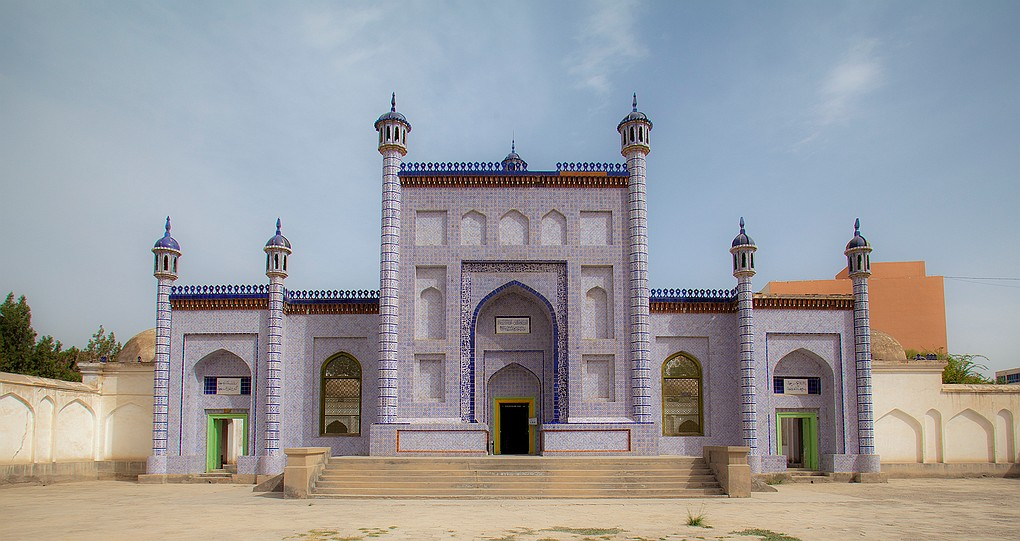Khotan: Jewel of the Silk Road
Uyghur Heritage
Khotan, also known as Hotan, is an ancient oasis town in the Uygur Autonomous Region along the Silk Road's southern branch. It is significant in Central Asia's history and culture.
At the crossroads of important trade routes, Khotan was a thriving centre of commerce and cultural exchange between China, India, Persia, and the rest of Central Asia. It was renowned for its production of jade, silk, carpets, and other luxury goods, which were highly sought after by merchants and travellers along the Silk Road.
Khotan was also a melting pot of diverse cultures and religions, including Buddhism, Islam, and indigenous Central Asian belief systems. The city was home to Buddhist monasteries, mosques, and temples, which coexisted alongside each other, reflecting the religious tolerance and syncretism of the region.
The ancient kingdom of Khotan, with its capital at Yotkan, was pivotal in transmitting Buddhism from India to China. It was an essential centre for learning and producing Buddhist texts, manuscripts, and art.
Throughout its history, Khotan faced numerous invasions and political upheavals, including conquests by various Central Asian and Chinese dynasties. Despite these challenges, the city continued to thrive as a hub of trade and culture until the decline of the Silk Road and the onset of modernity.
Today, Khotan is known for its archaeological sites, including the ruins of ancient cities, Buddhist stupas, and cave temples, which witness its rich history and cultural heritage. The region is also renowned for its traditional crafts, such as jade carving, carpet weaving, and pottery, which continue to be practised by local artisans.
If you need additional resources, here are some references for you to learn more about Khotan
1. Bailey, H. W. 1979. Dictionary of Khotan Saka. Cambridge and New York: Cambridge University Press.
2. Banerjee, P. 1978. Life of Krishna in Indian Art. New Delhi: National Museum.
3. Burrow, T. 1940. A Translation of the Kharoṣṭhi Documents from Chinese Turkistan. London: The Royal Asiatic Society.
4. Duan, Qing. 2010. “The Inscriptions on the Sampul Carpets.” Journal of Inner Asian Art and Archaeology 5.
5. Duàn Wénjié. 2006. Zhōngguó Dūnhuáng bìhuà quánjí [Complete Collection of China Dunhuang Murals; vols.5, 6, 7, 8, 9]. Tianjin: People’s Art Publisher.
6. Hétián wénguǎnsuŏ biānzhù. 2004. Khotan. Xinjiang Fine Art and Photography Press.
7. Jiǎ Yìngyí, Lĭ Wényīng, and Zhāng Hēngdé. 2009. Xinjiang Carpets. Suzhou: Suzhou University Press.
8. Schmidt-Colinet, Andreas. 2000. Die Textilien aus Palmyra: Neue und alte Funde (Damaszener Forschungen). P. von Zabern.
9. Spuhler, Friedrich. 2015. Pre-Islamic Carpets and Textiles from Eastern Lands. Dar al-Arhar al-Islamiyyah the al-Sabah Collection Kuwait. Thames &Hudson.
10. Xinjiang Uygur Autonomous Region Museum and Xinjiang Institute of Archaeology. 2001. Shanpula in Xinjiang of China – Revelation and Study of Ancient Khotan Civilization. Xijiang People’s Publishing House.
11. Yuè Fēng. 2009. Xinjiang lìshĭ wénmíng jícuì. Xinjiang: Xinjiang Arts and Photography Publisher.
12. Zhang, He. 2010. “Figurative and Inscribed Carpets from Shanpula-Khotan: Unexpected Representations of the Hindu God Krishna A Preliminary Study.” Journal of Inner Asian Art and Archaeology 5: 59–73.
13. Zhang, He. 2015. “The Terminology for Carpets in Ancient Central Asia” in Sino-Platonic Papers. University of Pennsylvania.
14. Zhang, He. 2017. “Stein’s Taklamakan Carpet Finds and New Discoveries in Xinjiang—Issues Concerning Knotting Techniques and Their Cultural Associations.” Proceedings for International Conference on “Marc Aurel Stein with special reference to South and Central Asian Legacy: Recent Discoveries and Research” Indira Gandhi National Centre for the Arts, New Delhi, India.
15. Zhang, He. 2018. “The Terminology of Central Asian Carpet” in the Journal of Dunhuang Research, no. 4.
16. Zhang, He. 2020a. “Knotted Carpets from the Taklamakan: A Medium of Ideological and Aesthetic Exchange on the Silk Road, 700 BCE–700 CE.” The Silk Road Journal, the Silk Road House.
17. Zhang, He. 2020b. “Ancient Questions” and “A Single-warp Knotted Carpets” in Hali magazine, Winter 2020, issue 206, London.




Comments
Post a Comment